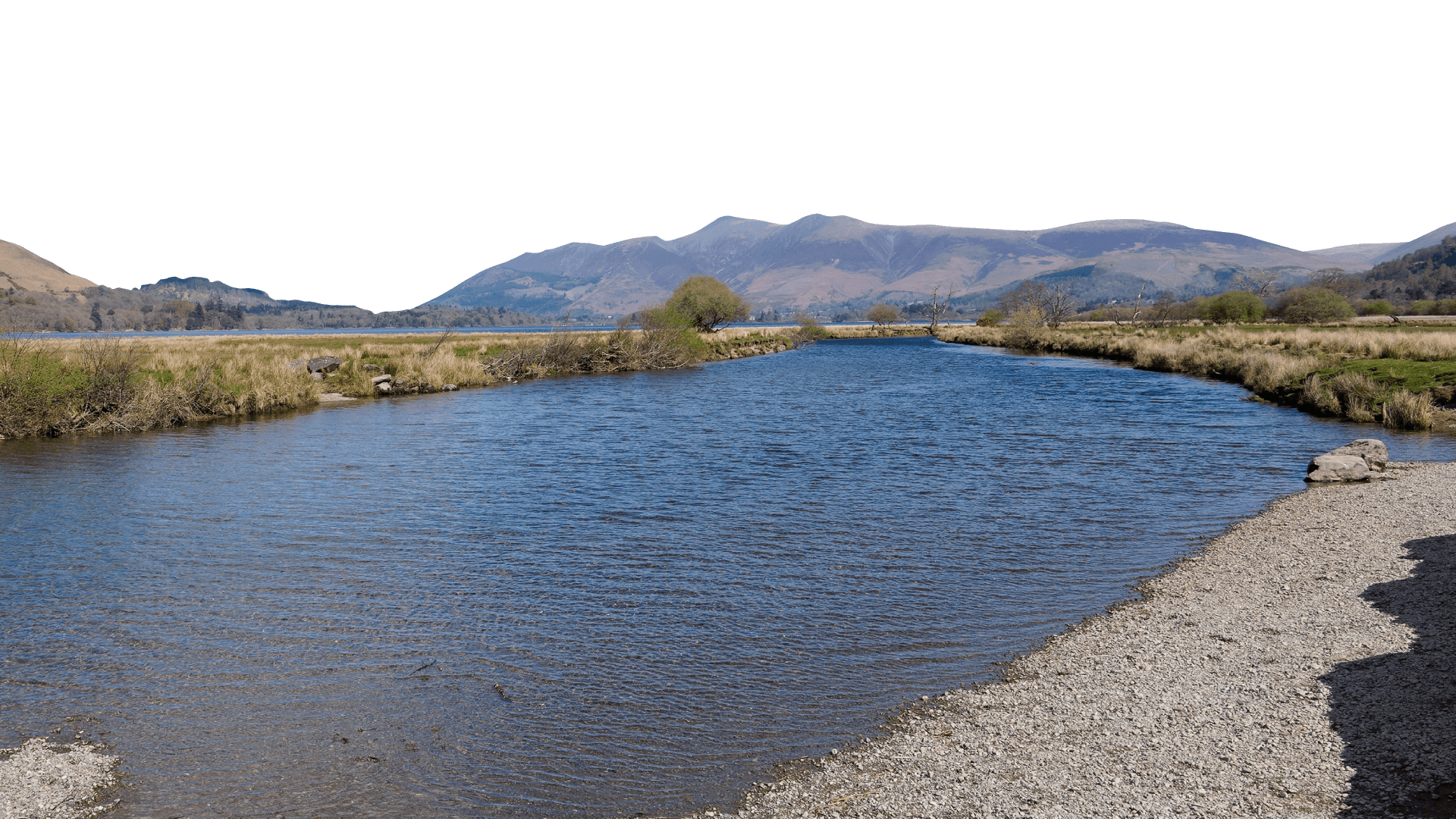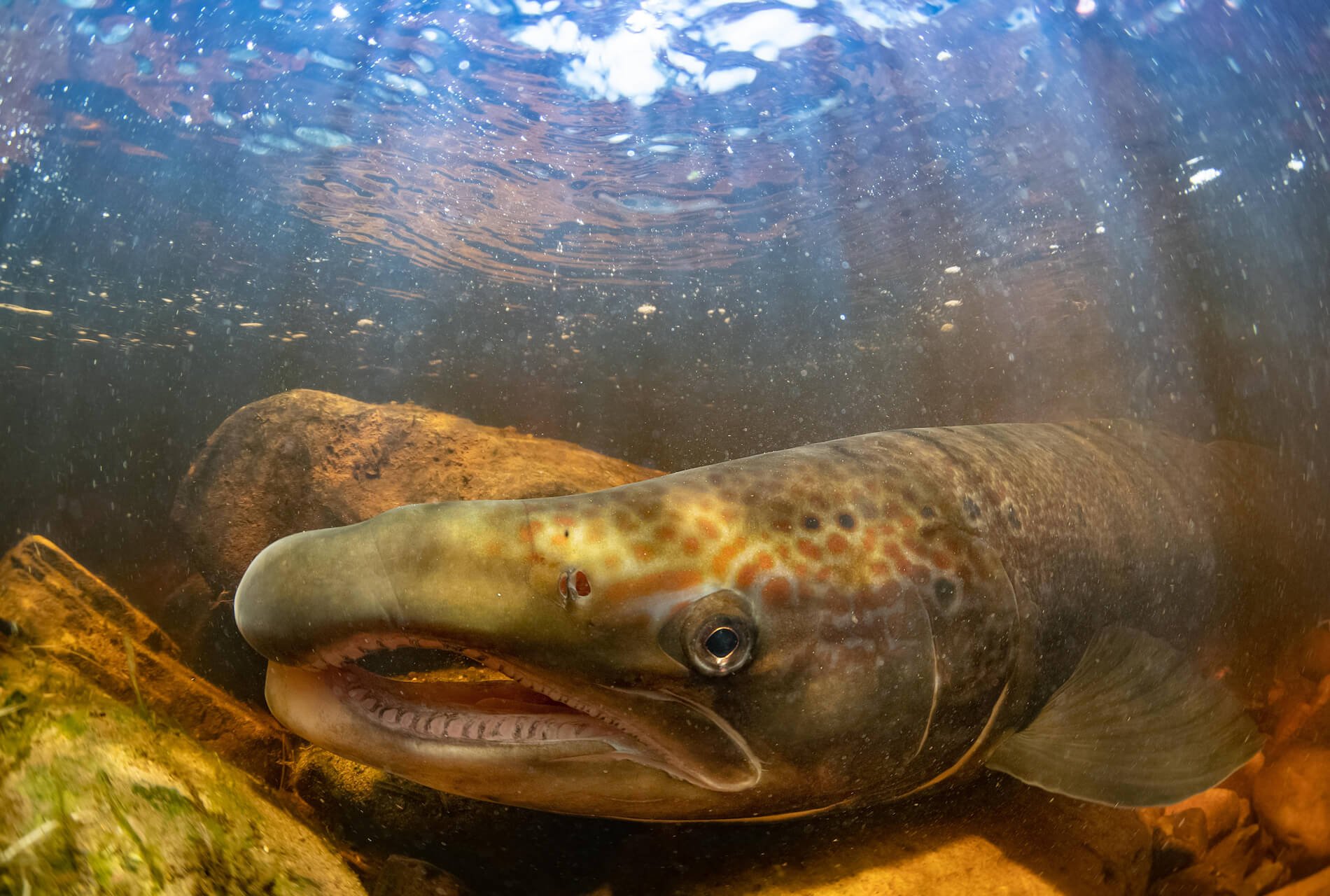
Atlantic Salmon
Atlantic salmon (Salmo salar) are sometimes called the ‘King of Fish’ for their streamlined and powerful beauty. They can be found in Scotland, Wales and North and South West England. The are anadromous which means they live in both fresh and saltwater and are most well known for their extraordinary journey to complete their lifecycle.
They start their lives in freshwater as juveniles. Juveniles feed on insects, invertebrates and sometimes plankton and they spend between 1-3 years in the freshwater environment before undergoing a physiological transformation known as ‘smolting’. The smolting process allows them to survive at sea and as part of the process they turn silver in colour. Once the transformation is complete they are known as ‘smolts’ and head downstream to the sea on mass in the spring. Usually by June most of the smolts have gone. At sea the adolescent fish feed, grow and mature into adults. Typical feeding grounds of Atlantic salmon are off the coast of Greenland and Iceland. Adult fish feed on small fish, mostly capelin. They can spend between 1-4 years at sea and grow up to 75cm long and are blue-silver in colour, with black dots on their backs.
Male Atlantic Salmon © Jack Perks
When they are ready, they return to freshwater to spawn by swimming upriver overcoming many obstacles on their way. They return to their native river and even the same stretch of river from which they were born with amazing accuracy. Female fish lay their eggs in gravel depressions known as ‘redds’. Males fertilise the eggs as soon as the female releases them after which the female covers the eggs with gravel. The eggs incubate over winter and in the spring the juveniles swim out of the gravels to compete the life cycle.
Salmon have long been a favoured seafood, but over-fishing and pollution have all seriously affected populations. They thrive in clean, cold rivers with complex habitats and have become a potent symbol of the need to restore clean, unspoiled waters than run wild to the sea. Atlantic salmon are categorised as being Near Threatened on the global IUCN Red List of Threatened Species.
Did you know?
Salmon are famed for their leaping abilities as they try to negotiate obstacles to get up-river to spawn, salmon can jump over 7 feet high!


